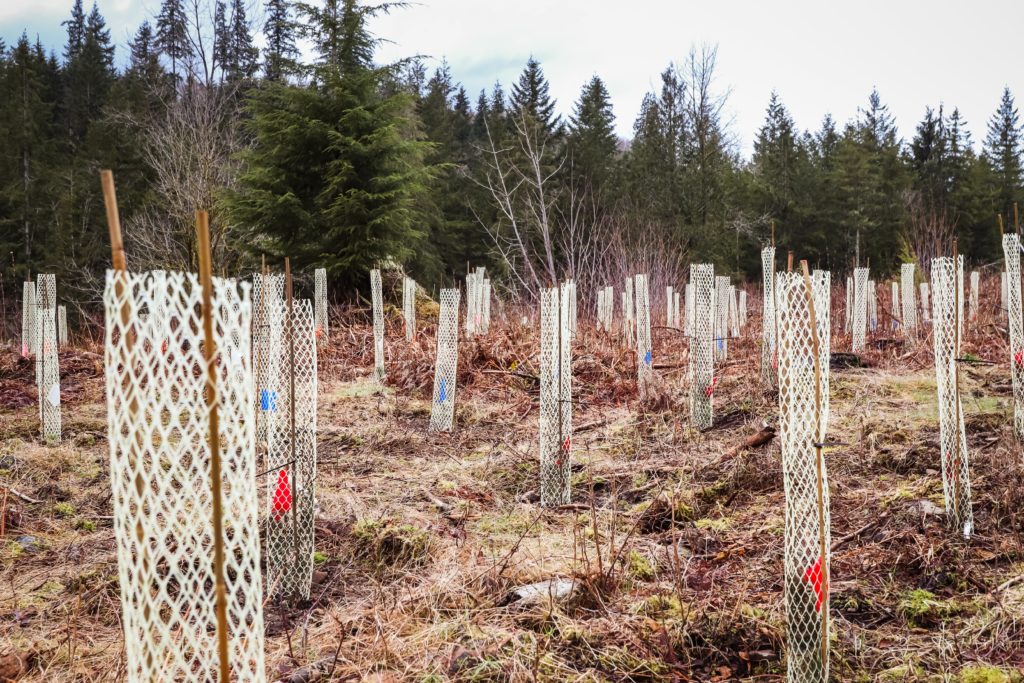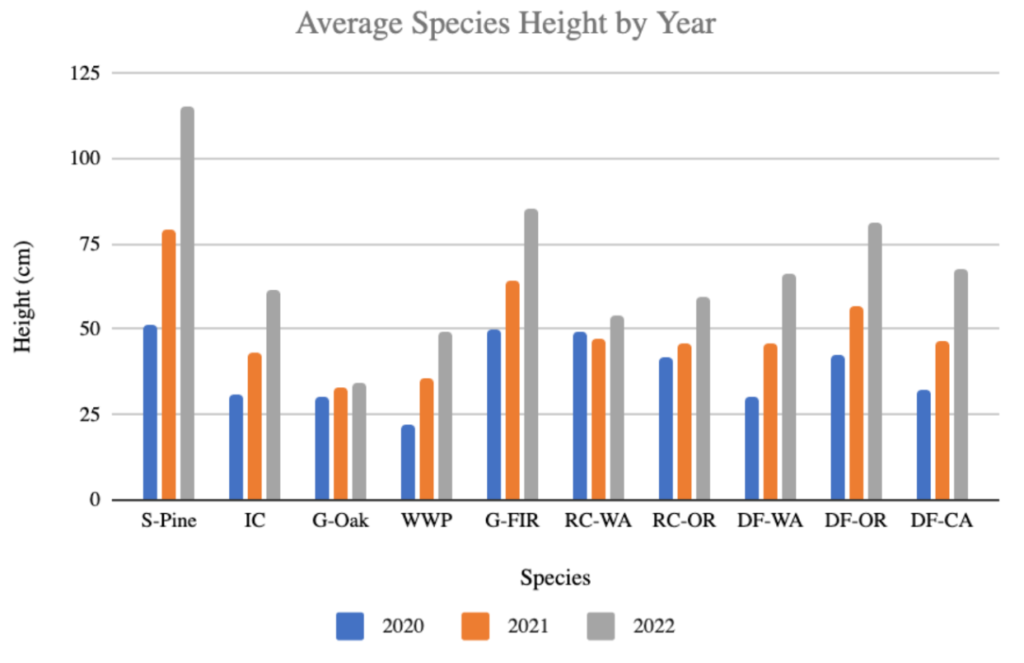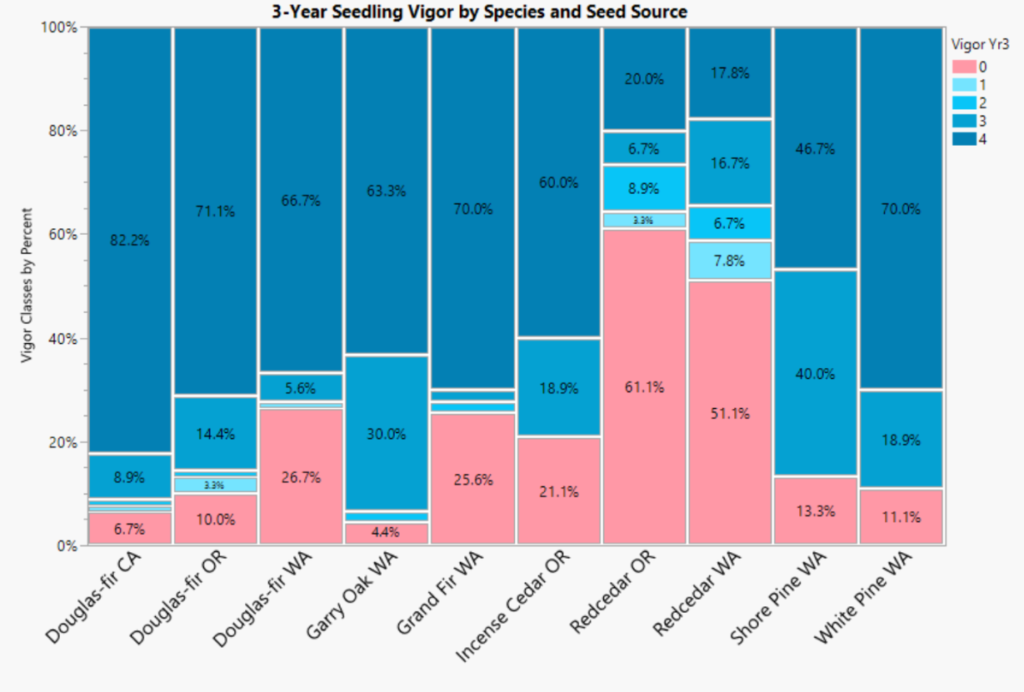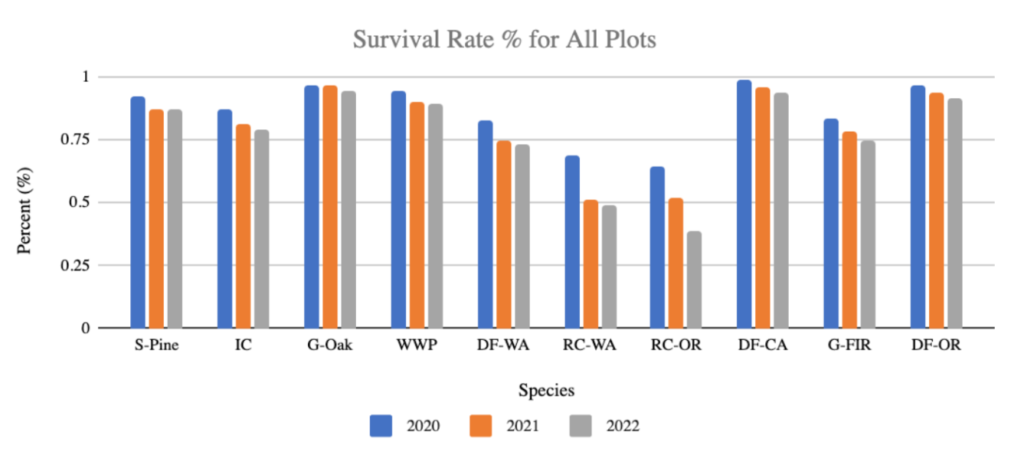Stossel Creek and Assisted Plant Migration: How’s It Growing?

Article by Shay Steeves. Shay completed her University of Washington Environmental Studies Capstone Project with Northwest Natural Resource Group in Winter/Spring 2023.
Three years ago marked the start of the Stossel Creek adaptive restoration case study. Located in Carnation, WA, Stossel Creek is now home to over 14,000 growing seedlings, including 900 that are set in special plots to allow researchers to track their growth and vitality.

Far from being an ordinary replanting project, the seedlings at Stossel Creek are planted with intention, as the goal of the study is to aid climate research through experimentation in climate adaptation strategies. The seedlings include seven tree species, some of which include seedlings sourced from multiple seed zones, including areas that have climates similar to the projected future climate of the Stossel Creek. Their purpose: help researchers evaluate the effectiveness of assisted plant migration.

Though approaches to assisted plant migration go by many names (such as assisted range expansion or assisted colonization), the term most commonly refers to the intentional movement of species to facilitate or mimic natural range expansion, as a management response to climate change (Viit et al. 2010).
As the earth’s climate continues to change, strategies like assisted migration may be key to helping both species and ecosystems adapt. This is what the project at Stossel Creek is striving to do. For more information about how the Stossel Creek study was created and structured, check out our first blog post here.
New Data
Now that the Stossel Creek project has been underway for a few years, trends are starting to emerge among the monitored seedlings. The graph below shows the average species height for tree varieties planted at Stossel Creek. During the first three years of the study, Shore pine (S-Pine) tree seedlings have grown much more quickly than the other species at the site. We also see that the Oregon and California Douglas firs (DF-OR and DF-WA, respectively) and the Grand firs (G-Fir) are outpacing other seedlings in height measurements. However, it is important to note that because all species grow a little differently, absolute height isn’t always an indicator of success, especially in the early-life stages.

The Douglas firs have been a key species to watch at Stossel Creek as they are already a flourishing native resident of Washington State. Yet, as Washington’s temperatures are projected to continue to increase in the coming decades, introducing Douglas firs from areas in California or Oregon could help Washington’s forests better adapt to future climate conditions. Some of the Stossel Creek Douglas fir seedlings are the same species as Washington’s native Douglas fir, but of a provenance adapted to the warmer and drier climates of California and southern Oregon. Assisted plant migration via these species would supplement some the genetics of Washington’s Douglas firs with more drought-tolerant genotypes from California and Oregon, thus fostering a higher climate resiliency in the species.
In addition to tree height, another factor Stossel Creek’s team monitors is tree vigor, evaluated on a scale from 0 (dead) to 4 (very healthy and growing well). Tree vigor can convey variations in overall tree health among seedlings. Figure 2 exemplifies how simply observing height (as in Figure 1) does not tell the full story of a seedling’s success. From this chart we can see that redcedar has lowest survival, followed by WA seed source of Douglas-fir and grand fir. After three years, Garry oak has the lowest mortality of all the seedlings.


Figure 3. illustrates the overall survival rate percentage of the 10 seedling types across all of the observation plots over the past three years. Once again California and Oregon Douglas firs perform well, and Gary oak, Shore pine, and Western white pine also make their way into the spotlight as higher-survival species.
What Does This Mean?
Though it is too early to draw grand conclusions about the relative success of seedlings at Stossel Creek, it is nonetheless exciting to see this process come to life. To manage for the expected future climate, forest managers can take several common-sense actions to build resilience and reduce stress in their forests. This includes reducing invasive species, maintaining lower tree density to reduce competition and drought stress, and planting more drought-tolerant species.
As part of that planting strategy, some managers have been sourcing seedlings from warmer and drier areas to grow trees already adapted to the expected future local climate. Overall, it’s important to focus on climate, not just location, when determining seed source origins. For example, potential seed sources adapted to the future climate of a particular site may be found at lower elevations in the same region where it is warmer and drier. Also, there are tradeoffs in going too far, too fast with assisted migration, as some seedlings may be maladapted for the short term when the climate hasn’t changed enough to support their phenological adaptation.
The project at Stossel Creek is a great example of the power of partnerships to develop climate adaptation strategies. Researchers aim to ensure at least a decade of viable data that can be referenced by foresters and climate scientists alike, so we look forward to continue tracking the success of the seedlings for a number of years.
To learn more, visit NNRG’s webpage on the Stossel Creek project. Or, visit the project page of our partner organization, Mountains to Sound Greenway Trust.
Partners and Acknowledgements
The project was funded by a grant from the Climate Adaptation Fund of the Wildlife Conservation Society, established by a grant to WCS from the Doris Duke Charitable Foundation, funds from the City of Seattle, and Carter Subaru of King County. It’s being implemented by Mountains to Sound Greenway Trust, Northwest Natural Resource Group, Seattle City Light, and Seattle Public Utilities.

Leave a Reply